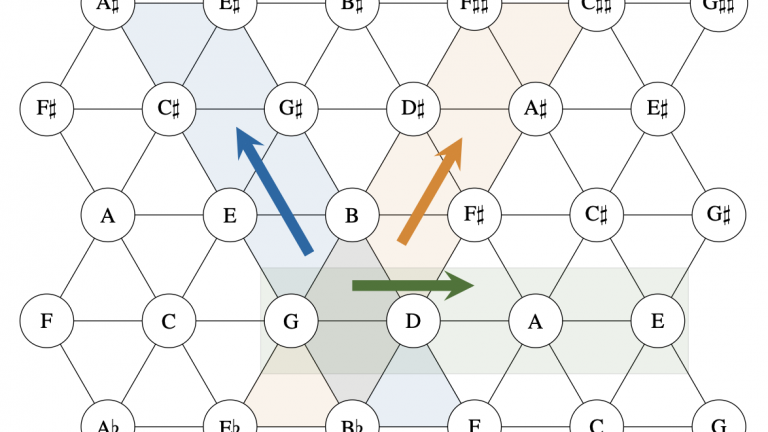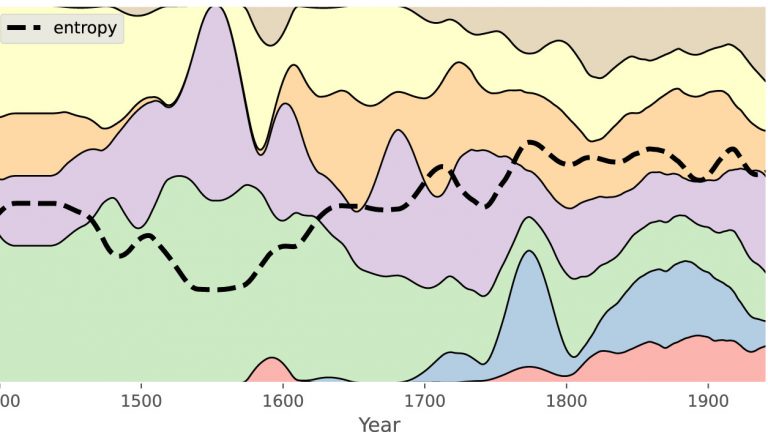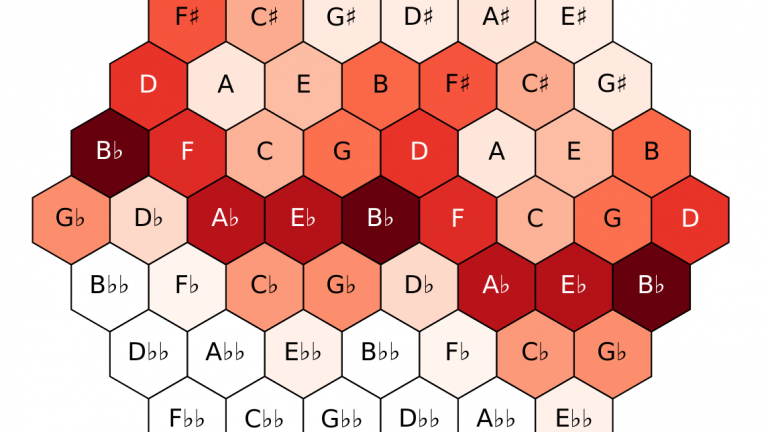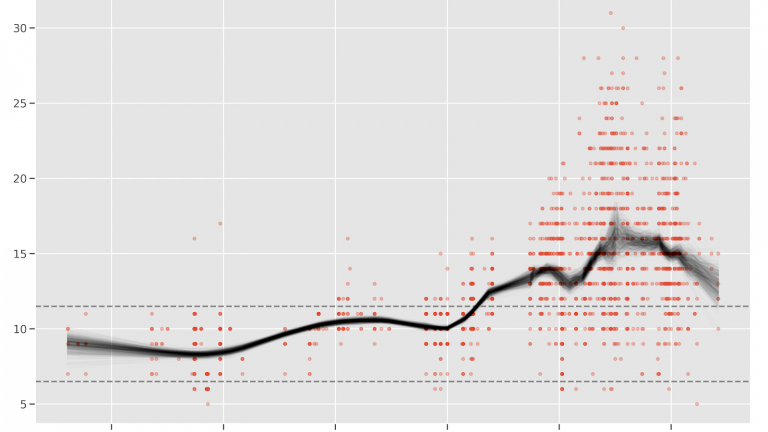Category: Distant Listening

A Formal Model of Extended Tonality
Extended tonality is a central system that characterizes the music from the 19th up to the 21st century, including styles like popular music, film music or Jazz. Developing from classical major-minor tonality, the harmonic language of extended tonality forms its own set of rules and regularities, which are a result of the freer combinatoriality of (…)

Discovering latent tonal “topics” in a large historical corpus
In a study, recently published in Music & Science, DCML researchers Fabian C. Moss, Markus Neuwirth, and Martin Rohrmeier use Latent Dirichlet Allocattion (LDA), one of the most pervasive topic models in the Digital Humanities, to uncover underlying “tonal profiles”: distributions of pitch classes. Tracing topics over ~600 years shows historical changes in tonality, in (…)

A computational model for note distributions in musical pieces
The goal of music theory is to describe and explain underlying structure in musical compositions in systematic and consistent ways. For centuries, theorists have written e. g. about different tuning systems, compositional rules for combining notes, and the formal arrangement within musical pieces. In the 19th century, a heated debate took place of how to (…)

Tracing historical changes in the exploration of tonal space
It is almost trivial to state that composers from different times write music in very different styles. But how can aspects of this stylistic differences be investigated on a larger scale? How can we study whether there are systematic changes in the way music evolves throughout time? Traditional music theorists address questions like these by (…)